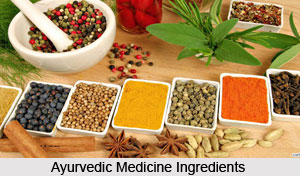 In the Buddhist period reached to great heights. Centres for Indian medical studies were established during this period and ayurvedic medicine was taught at the universities of Kashi, Taxila and Nalanda. This period is regarded as the golden era of Ayurvedic treatment. The term `Ayurveda` was replaced by the term `tigiccha-satta` in early Buddhist literature.
In the Buddhist period reached to great heights. Centres for Indian medical studies were established during this period and ayurvedic medicine was taught at the universities of Kashi, Taxila and Nalanda. This period is regarded as the golden era of Ayurvedic treatment. The term `Ayurveda` was replaced by the term `tigiccha-satta` in early Buddhist literature.
Gautama Buddha was regarded as a great physician as well as a surgeon. During the early Buddhist period medical treatment and surgery developed to a greater extent. The great physician and renowned surgeon Jivaka belonged to this period. There are several anecdotes that mentions about his expertise. Jivaka had completed seven years of medical training under Bhiksu Atreya at Taxila University. After that he became a famous surgeon. Buddhism propagated outside India helped in the growth and development of ayurvedic medicine. The merits of ayurveda spread over to Tibet, Central Asia, Sri Lanka, Indonesia, Java, Sumatra and to many other countries.
Ayurveda in Early Buddhist Period
In the early Buddhist period ayurveda flourished considerably. The Ayurvedic practitioners during this period commonly used mercuric-sulphur combination based medicines. They usually used sulphur, mercury and other metals along with herbs to prepare the different types of medicines. Nagarjuna was a famous Buddhist herbologist and an ayurvedic practitioner of this period. He was known for inventing different types of new drugs for the treatment of diseases. Many rulers following the teachings of the Gautama Buddha promoted healing activities. They constructed hospitals and established free dispensaries. Emperor Ashoka after the Kalinga War was highly influenced by the Buddhist teachings. He banned bloodshed in his kingdom. Hence many Ayurvedic practitioners who practiced surgery left their surgical intervention and adopted new medicinal treatments.
Ayurveda in Later Buddhist Period
In the later Buddhist period Ayurveda however received a blow when the doctrine of `ahimsa` or non-injury was preached. It changed the viewpoints of the common masses who looked upon surgical operations as causing injury (himsa) and pain to patients. Thus, surgery was highly discouraged during that period. The extensive study of the eight branches (astanga) of ayurveda suffered great loss. Only the branch of Kayacikitsa i.e. inner medicine and Rasayana survived. Thus, the practice of the surgery during this period slowly died out.




















